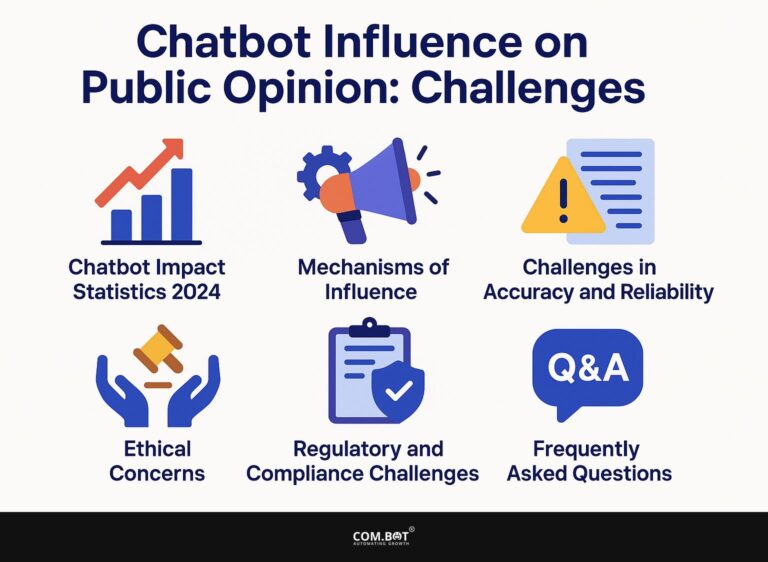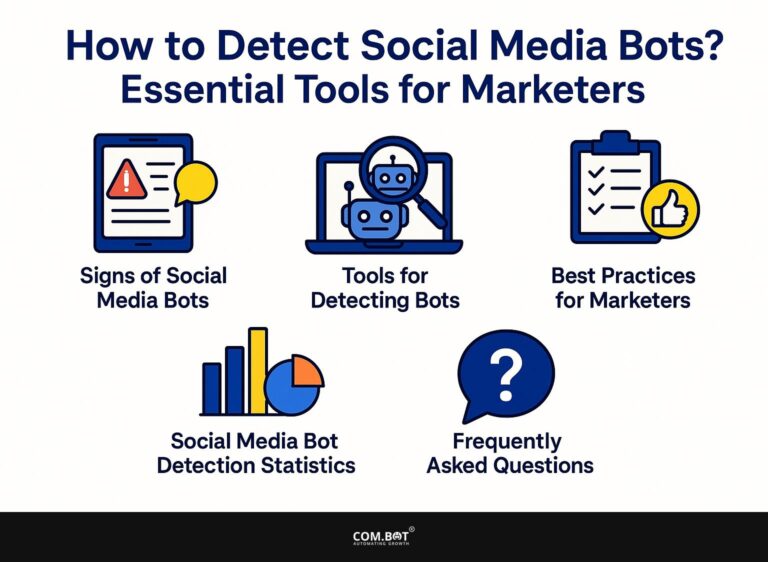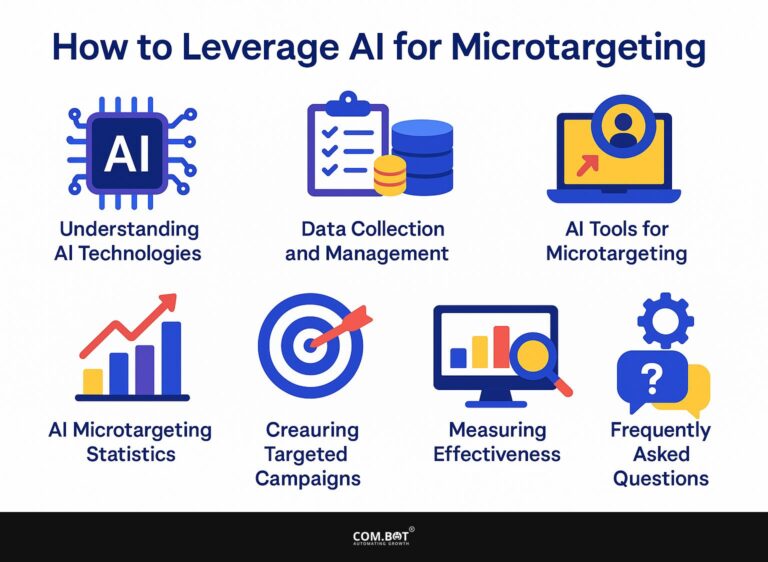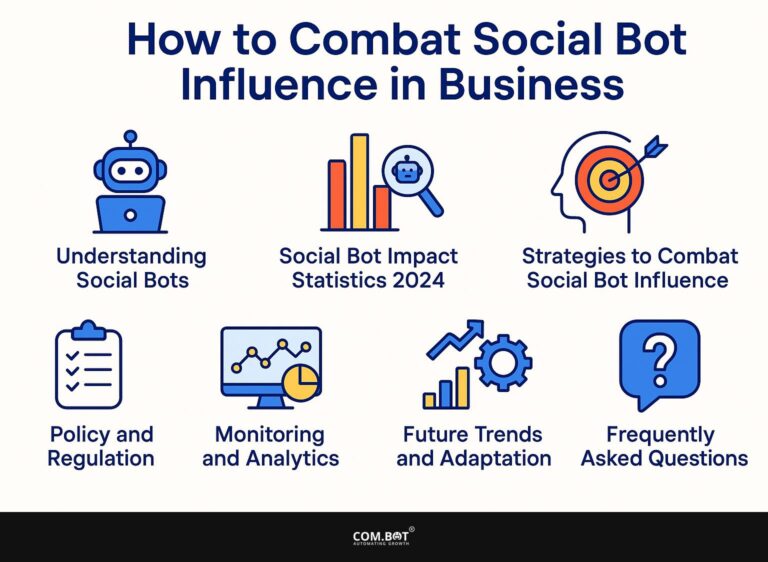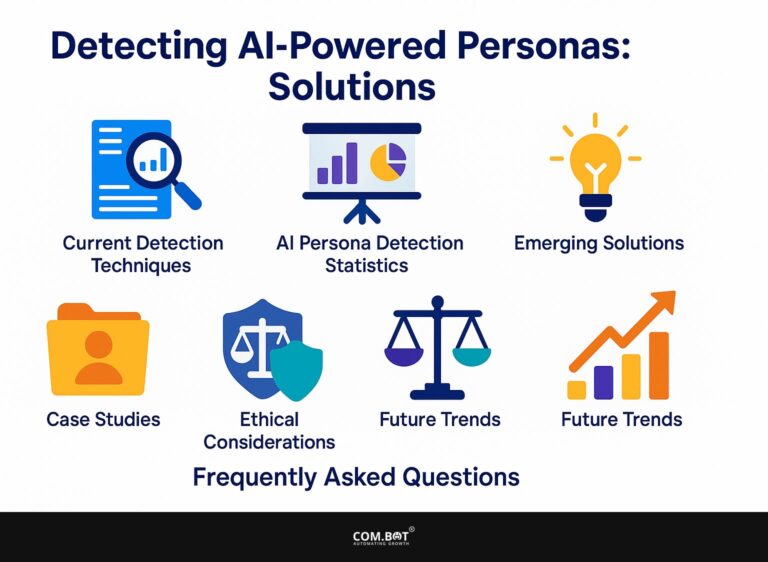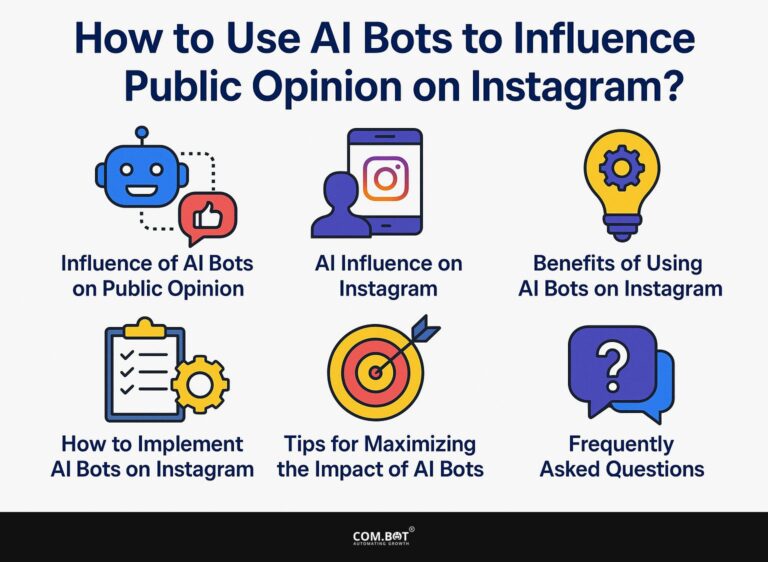How Social Bots Spread Misinformation: Techniques
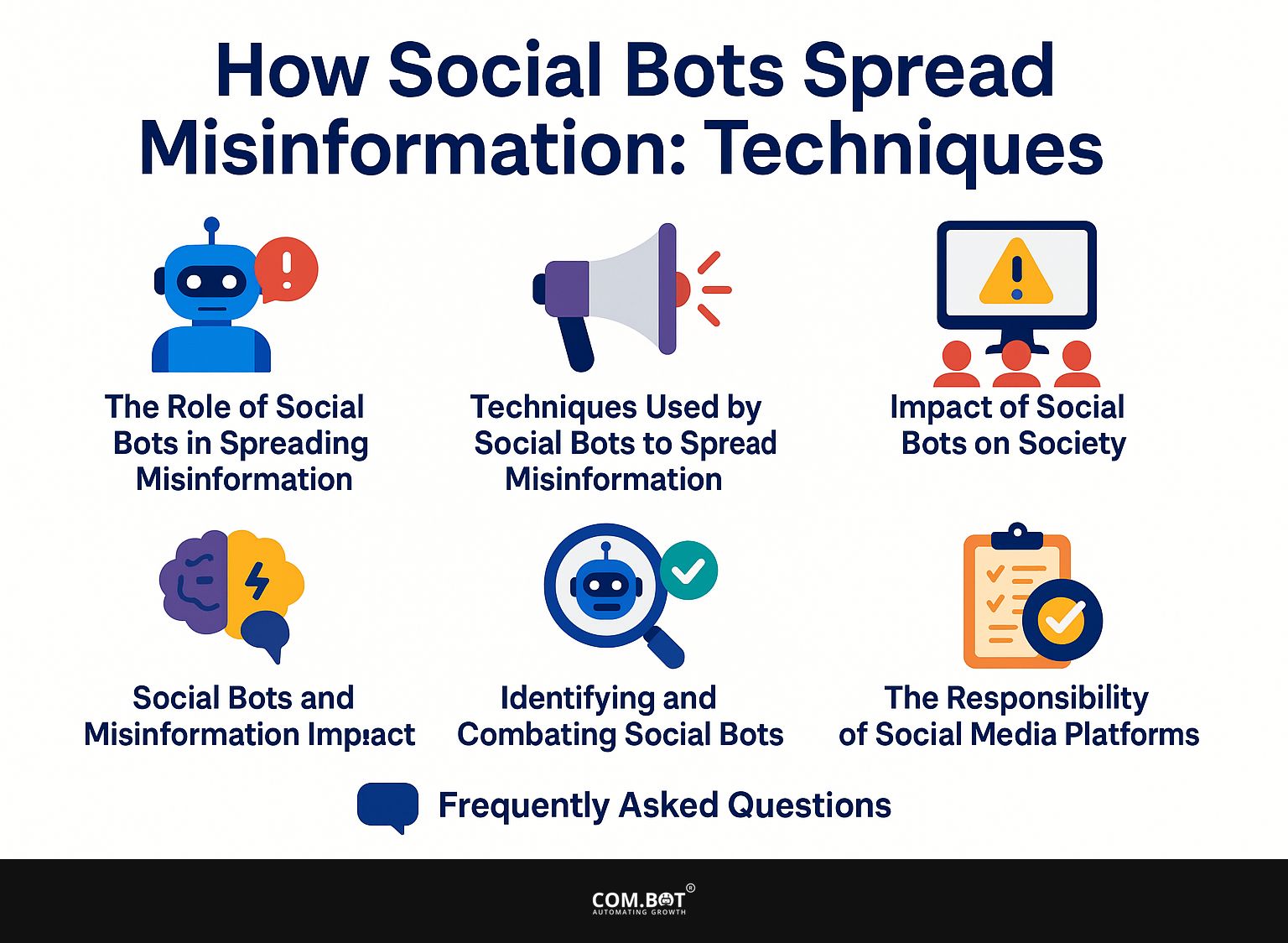
In today’s digital landscape, social bots have emerged as powerful tools that can shape public perception and influence discourse.
These programmed accounts play an important role in distributing misinformation across social media platforms. From automated posting and retweeting to creating fake accounts These bots use different methods to influence popular topics and spread fake stories.
This article examines how social bots, their societal impacts, and essential strategies for identifying and combating their influence.
Help us understand the details of this topic. digital phenomenon and the responsibility of social media platforms in addressing the challenge.
Key Takeaways:
- Social bots play a significant role in spreading false information through social media platforms.
- Methods used by social bots to spread false information include automatically posting, creating fake profiles, and influencing popular topics.
- The consequences of social bots spreading misinformation can have a negative impact on society and it is important to identify and combat them.
- 1 The Role of Social Bots in Spreading Misinformation
- 2 Techniques Used by Social Bots to Spread Misinformation
- 3 Impact of Social Bots on Society
- 4 Social Bots and Misinformation Impact
- 4.1 Prevalence and Perception of Bots: Estimated Prevalence of Bots
- 4.2 Prevalence and Perception of Bots: Influence Perception
- 4.3 Prevalence and Perception of Bots: Bot Regulation Preference
- 4.4 Prevalence and Perception of Bots: Bot Involvement
- 4.5 The Consequences of Misinformation Spread by Social Bots
- 5 Identifying and Combating Social Bots
- 6 The Responsibility of Social Media Platforms
- 7 Frequently Asked Questions
- 7.1 1. What are social bots and how do they spread misinformation?
- 7.2 2. What techniques do social bots use to spread misinformation?
- 7.3 3. How do social bots target specific groups to spread misinformation?
- 7.4 4. Do social bots only spread misinformation on social media?
- 7.5 5. Can social bots be used for good purposes?
- 7.6 6. What can be done to combat the spread of misinformation by social bots?
What are Social Bots?
Social bots are programmed accounts on social media that communicate with people and distribute information, which may be accurate or misleading. During the COVID-19 pandemic, these bots have significantly influenced public discussions by spreading both true and false claims. The rise of social bots has been influenced by factors such as human susceptibility to misinformation and the lack of effective online sources to counteract it.
Knowing about social bots is important for handling the challenges of information overload today, especially in areas like health and safety. These computer programs use techniques like sentiment analysis and natural language processing to speak in a way that sounds like real human conversation.
Using algorithms, they can create content focused on popular trends or particular subjects, effectively attracting users. This same capability can facilitate social media manipulation, leading to rampant misinformation spread, which skews public perception and erodes trust.
People often find it hard to tell if information is genuinely from a person or generated automatically. It’s important for users to figure out where the information comes from and if they can trust it. Knowing how social bots influence what people think and do is key to building an informed community.
The Role of Social Bots in Spreading Misinformation
The use of social bots to spread false information, especially during the COVID-19 pandemic, is a serious issue for health experts and researchers.
These automated accounts have spread false information and conspiracy theories about the coronavirus, contributing significantly to the information overload that the World Health Organization has warned about.
Platforms like Twitter and Facebook have become places where false information is common, often causing confusion and fear among users.
How Social Bots are Used to Spread False Information
Social bots are used to share false information in different online groups, affecting how people think and act. These fake accounts share incorrect information about COVID-19, making up lies that can quickly gain attention.
They often use strategies that create false stories, tapping into people’s fears and worries to influence their feelings. For instance, they may share fabricated statistics or pseudo-expert opinions that undermine the validity of scientific guidance.
This planned action creates confusion and mistrust in real health messages, putting public health programs at risk. As the amount of misleading information grows, people looking for correct information find it difficult, showing the urgent need for media literacy and critical thinking skills in managing online content.
Techniques Used by Social Bots to Spread Misinformation
Social bots use various advanced methods to spread false information on social media, affecting public views on important subjects like health and politics.
One typical approach is using bots to post content repeatedly and rapidly dominate discussions on trending subjects.
Retweeting is another method where bots share false information and conspiracy theories, creating the illusion of agreement among users in internet communities. See also: Social Bots: Impact and Opinion Manipulation.
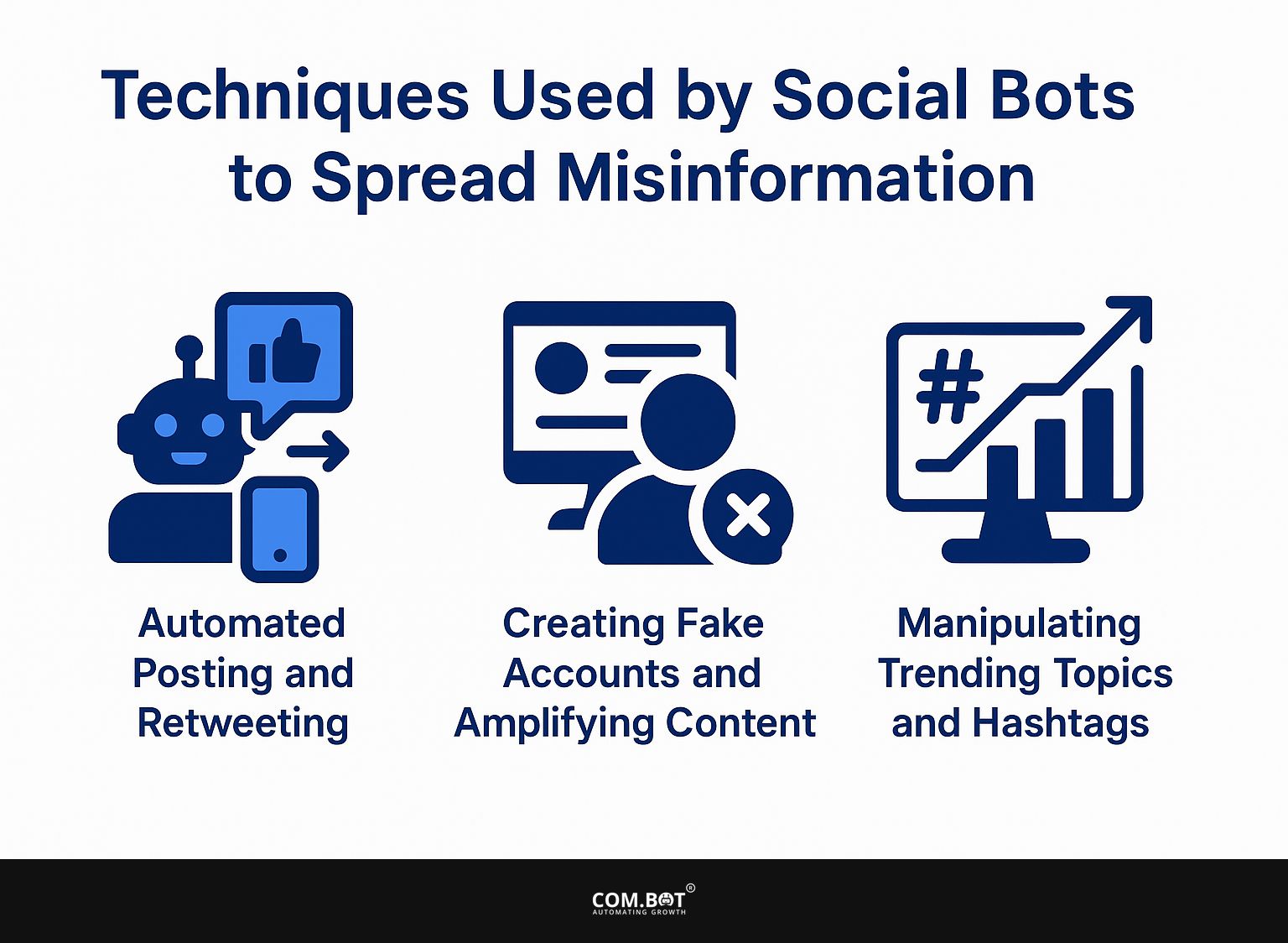
1. Automated Posting and Retweeting
Social bots frequently post and retweet automatically, spreading incorrect information on social media. By continuously posting pre-programmed content related to COVID-19 and other topics, these bots can saturate feeds and overwhelm genuine discourse. Retweeting allows social bots to spread false information quickly, increasing its visibility and making it appear more believable to internet users, which results in more false content.
These systems operate without issues, making false stories appear widely accepted and liked. As users encounter these repeated messages, often embedded in trending hashtags or popular discussions, the line between authentic content and manipulated information blurs.
This misleads people looking for correct information and creates a situation where real discussions are blocked. The constant activity of these bots changes how people view things, allowing false information to spread, which seriously threatens informed choices and public discussions.
2. Making False Profiles and Spreading Content
Creating fake accounts is a common method used by social bots to spread content and deceive users on social media. These bot networks operate behind the facade of legitimate accounts, allowing them to share and promote misinformation, particularly regarding critical issues like COVID-19. Fake accounts increase likes and retweets, creating a misleading impression of trust, which makes it difficult for people to distinguish between true and false information.
Fake profiles change how people see things and affect what real users think and do. This can lead to the spread of conspiracy theories and false claims.
When false information spreads quickly through these carefully organized networks, it can disturb public conversations and twist stories to fit certain goals. Consequently, knowing the role of fake accounts in online communication is important for people who want to manage the flow of information and protect their views from misleading influences.
Using popular topics and hashtags is a planned way for social bots to spread false information in online conversations. By using popular hashtags linked to COVID-19 or other important events, these bots can spread false stories and increase their audience. Shifts in social media can confuse public discussion, making it difficult for people to understand the real problems.
With more people using social media, bots often use complex algorithms to study current trends. This lets them quickly change and spread false information that fits into active discussions.
When a trending topic is manipulated in this manner, it can influence public opinion, sow confusion, and create polarization among users. These strategies have serious consequences because they spread misinformation and harm the honesty of democratic systems and community trust.
As these bots propagate misleading information, they contribute to a vicious cycle where reliable sources are overshadowed, consequently affecting real-world behaviors and decisions.
Impact of Social Bots on Society
The effect of social bots on society is becoming more apparent, especially regarding public health and the COVID-19 pandemic. These computer-controlled accounts play a key role in spreading lies, leading to confusion, fear, and mistrust among people.
As false information quickly circulates on social media platforms, it hinders the efforts of health authorities and organizations like the World Health Organization to share correct details about the coronavirus.
Social Bots and Misinformation Impact
Social Bots and Misinformation Impact
Prevalence and Perception of Bots: Estimated Prevalence of Bots
Prevalence and Perception of Bots: Influence Perception
Prevalence and Perception of Bots: Bot Regulation Preference
Prevalence and Perception of Bots: Bot Involvement
The data on Social Bots and Misinformation Impact offers a thorough examination of how bots are seen, their impact, and the public’s desire for rules, especially regarding COVID-19. This analysis shows important information about the increasing worries about false information and the specific part social bots have in online spaces.
Prevalence and Perception of Bots suggests a rising awareness of bot activity, with the estimated prevalence of bots increasing from 31.9% pre-exposure to 37.8% post-exposure. This indicates that exposure to information about bots raises public awareness of their presence and potential impact. As people learn more, they can more easily notice signs of automated actions.
The Influence Perception data shows a slight increase in perceived influence, with others’ influence rising from 3.1 to 3.5 and self-influence from 2.0 to 2.3 after exposure. This suggests that while individuals may acknowledge a moderate influence of bots on themselves, they perceive a greater impact on others. This disparity highlights a common psychological bias where individuals underestimate external influences on their own beliefs while recognizing them in others.
Regarding Bot Regulation Preference, there’s a notable increase in support for strict regulation, with a jump from 27.1% pre-exposure to 38.6% post-exposure. This change highlights the increasing public demand for rules to reduce fake information spread by bots. It suggests that when people see what bots can do, they want stricter control and supervision.
Bot Involvement related to COVID-19 is important, with 66% of related tweets attributed to bots, and 45% containing misinformation. This data shows how bots can spread misinformation during important events, making it hard for public health officials to communicate and maintain trust. Addressing this requires coordinated efforts from platforms, policymakers, and users to identify and limit the spread of false information.
In summary, the data indicates that awareness and regulation preferences change following exposure to information about bots, reflecting increased concern over their influence and a desire for stricter control. Bots have played a part in spreading false information, especially during the COVID-19 pandemic, highlighting the need for strong measures to control their effect on public conversation.
The Consequences of Misinformation Spread by Social Bots
Robots that spread incorrect information can be very damaging, particularly in areas like public health. During the COVID-19 pandemic, false information has led to confusion about health rules, vaccine effectiveness, and safety measures, which has endangered lives.
Human susceptibility to misinformation exacerbates these issues, as individuals often accept and share misleading content without critical evaluation, perpetuating the cycle of misinformation. This susceptibility is amplified by factors such as emotional responses and cognitive biases, which can blind individuals to facts that contradict their preconceived notions.
As a result, communities have witnessed a decline in adherence to essential health guidelines and increased vaccine hesitancy, undermining collective immunity efforts.
The rapid spread of misleading narratives can incite public panic, distract from legitimate information, and challenge efforts by healthcare officials to effectively communicate critical updates.
In the long term, this spread of false information can harm personal health and heavily strain healthcare systems. This shows the urgent need for public education campaigns and strong media literacy programs.
Identifying and Combating Social Bots
Identifying and stopping social bots is important for reducing the spread of false information on social media platforms.
Different detection methods have been created to find bot accounts based on their actions and interactions. These methods examine patterns such as tweet interaction rates, the regularity of post creation, and the characteristics of automated accounts to find potential bots that distribute incorrect information. Curious about how AI is enhancing these detection strategies? Our detailed exploration provides insights into the evolving technology.
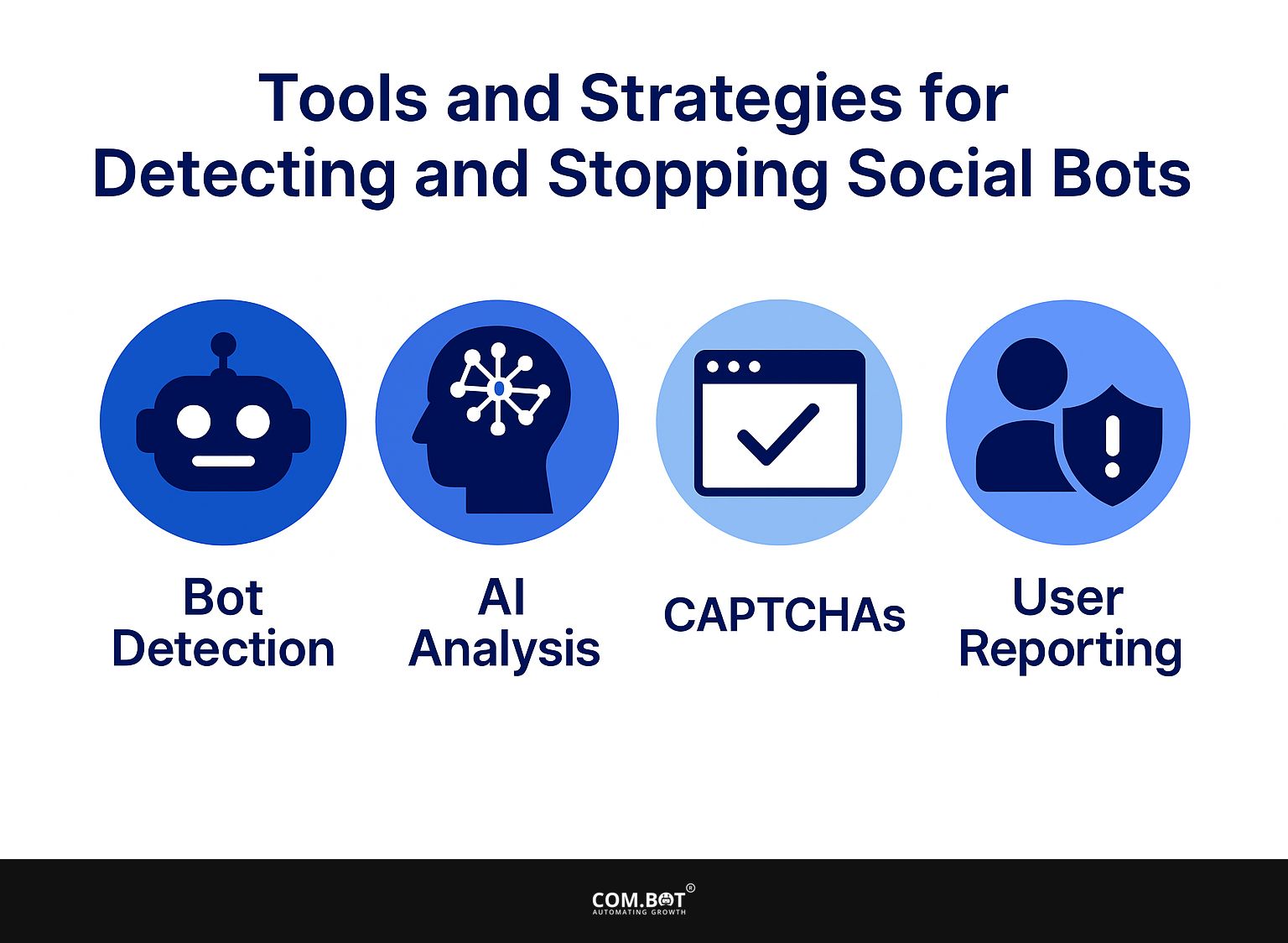
Tools and Strategies for Detecting and Stopping Social Bots
Different tools and methods have been developed to identify and block social bots that spread false information on social media. Researchers use advanced machine learning methods to study the features and actions of bots. This helps them identify human users and not fake accounts accurately. Public outreach efforts and user learning are important to help people identify and report questionable actions linked to false information.
Different technological tools are always changing, from algorithms that examine how people post to platforms using natural language processing to judge the trustworthiness of shared content.
Important projects between tech companies and universities work to make detailed lists of identified bots, helping to spot them more easily.
On the user front, promoting digital literacy equips people with skills to critically evaluate the authenticity of online interactions. By encouraging a group of alert users who can spot warning signs, the combined effort helps reduce the impact of social bots on public conversations.
The Responsibility of Social Media Platforms
Social media platforms need to address the spread of fake accounts and misinformation. Organizations like Twitter and Facebook should enforce strict rules and use current technology to monitor and control bot actions that interfere with public conversations.
Their commitment to being open and responsible is key to providing users with accurate information, especially during events like the COVID-19 pandemic. For a deeper understanding of how automation can support these efforts, discover Com.bot’s Enterprise Omnichannel Automation strategies.
What Role Do Social Media Platforms Play in Combating Social Bots?
Social media platforms are important for fighting against social bots that spread false information on their networks. By employing algorithmic detection tools, these platforms can identify bot-like behavior and take appropriate action, such as suspending accounts or limiting their reach. Working together with research institutions helps them learn more about bot traits and strengthens their plans to combat misinformation.
These partnerships allow researchers to examine new methods used by bots, creating a setting where better defenses can be created.
Besides algorithmic solutions, platforms have user reporting features that let people mark suspicious content, helping reduce misinformation.
These initiatives play an important role; they help cut down on false information and encourage genuine conversations online.
By talking directly with their users and being open and honest, social media companies help rebuild trust and make sure real people are heard over the noise made by bots.
Frequently Asked Questions
Social bots are computer programs that automatically imitate human actions on social media sites. They spread misinformation by posting and sharing false or misleading content on a large scale.
Social bots employ different methods to distribute false information. They create fake profiles, use hashtags and popular subjects, and tweak algorithms to increase their content’s reach.
Social bots can be programmed to target specific demographics, communities, or geographic locations. They use this targeting to spread misinformation to those who are most likely to believe and share it.
No, social bots can also spread misinformation through other online platforms such as messaging apps, forums, and websites. They are created to connect with people on any online platform where they get their information.
While social bots are primarily used for spreading misinformation, they can also have positive uses such as providing customer service, disseminating news updates, and promoting helpful resources. However, we should not overlook the possible harm they can cause.
To combat the spread of misinformation by social bots, social media platforms can implement stricter policies and algorithms to detect and remove fake accounts and false information. Users can also help by fact-checking information before sharing and being cautious of suspicious accounts and content.
